Living better with a changing climate: summary document (accessible version)
Updated 31 March 2023
Applies to England
Our Climate Ambition – creating a net zero nation resilient to climate change
Tackling the climate emergency is central to the work of the Environment Agency. Our Climate Ambition is to create a net zero nation that is also resilient to climate change. We are reducing climate change by driving down our own emissions to net zero by 2030 and through our regulation of key industrial sectors, and by administrating the UK Emissions Trading Scheme. We also play a critical role on the front line in helping communities to be better protected against climate impacts including rising sea levels and extreme weather events.
This publication describes the work we do to manage those climate impacts in England.
Our latest review shows
Significant climate impacts are inevitable – especially for flood and coastal risks, water management, freshwater wildlife and industrial regulation.
The Environment Agency is preparing for climate impacts by working with government, businesses and communities.
We can successfully tackle the climate emergency if we do the right things. Early action counts.
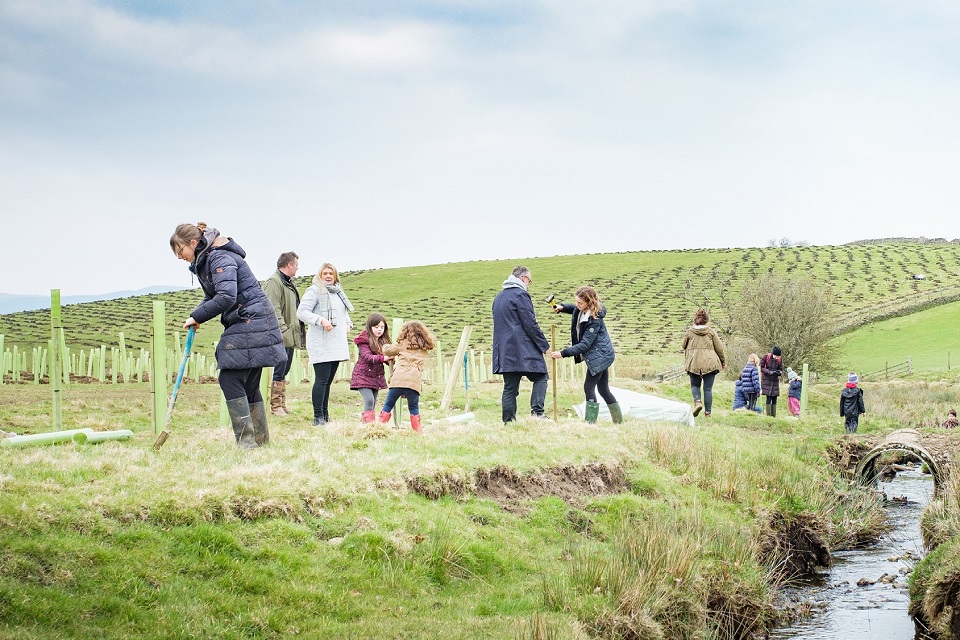
Tree planting for the Broughton Hall natural flood management scheme. © White Rose Forest
Facing the challenge
The changing climate poses five urgent challenges to the Environment Agency’s work:
- the Environment Agency alone cannot protect everyone from increasing flood and coastal risks
- climate change makes it harder to ensure clean and plentiful water
- regulation is not yet ready for a changing climate
- ecosystems cannot adapt as fast as the climate is changing
- there will be more and worse environmental incidents
These climate realities are galvanising us to think and work differently.

Sir James Bevan. © Environment Agency
Why we need to act now
Summer rainfall is projected to decrease by 22% and winter rainfall is expected to increase by 13% by the 2080s.
The number of properties on the floodplain in England is expected to double by 2065.
4 million people and £200 billion of assets are at risk of flooding from rivers or sea.
3 million properties are at risk of surface water flooding where no early warnings are available.
40 million early warning messages sent for river and sea flooding over the past 10 years.
The cost of incidents can be significant:
- the 2007 floods had an economic cost of £3.9 billion
- there is a 50% increase in mental ill health after flooding
Our call to action
Responding to the climate emergency is a core part of the Environment Agency’s work. We are already on the journey of changing what we do and how we do it.
We have crystallised under 8 themes the actions we will take to respond to these realities and create a more resilient future.
We are collaborating nationally and locally to show how it is possible to live differently in a changing climate. We hope the case studies in this publication will inspire you to join us.
Our approach to adaptation involves:
- thinking differently
- collaborating
- investing for change
- working with nature
- designing low carbon futures
- strengthening community resilience
- helping businesses prepare
- stepping up to level up
Thinking differently
We are embracing the need to work differently to achieve multiple outcomes.
Without its complex network of flood defences, the Thames Estuary would be at significant risk from storm surges and flooding from the north Sea. A world class system of defences, including nine major barriers, around 330 kilometres of walls and embankments, and over 900 other structures (such as flood gates, outfalls and pumps), work together to protect the 1.4 million people and £321 billion worth of residential property in the estuary from regular tidal flooding.
With climate change, sea levels are rising and these defences are having to work harder to protect a growing population.
The Thames Estuary 2100 Plan was published in 2012, and sets out recommendations for managing rising sea levels. It was the first adaptive flood risk management strategy developed in England and a trailblazer for the adaptation pathways approach advocated by the National FCERM Strategy published in 2020. By taking an adaptive approach, we can better anticipate and respond to a range of future climate scenarios.
The Thames Estuary 2100 Plan is recognised globally as a pioneering example of how to adapt to a changing climate, ensuring we are investing in the right flood risk management actions at the right time to ensure the resilience of the estuary and its communities.
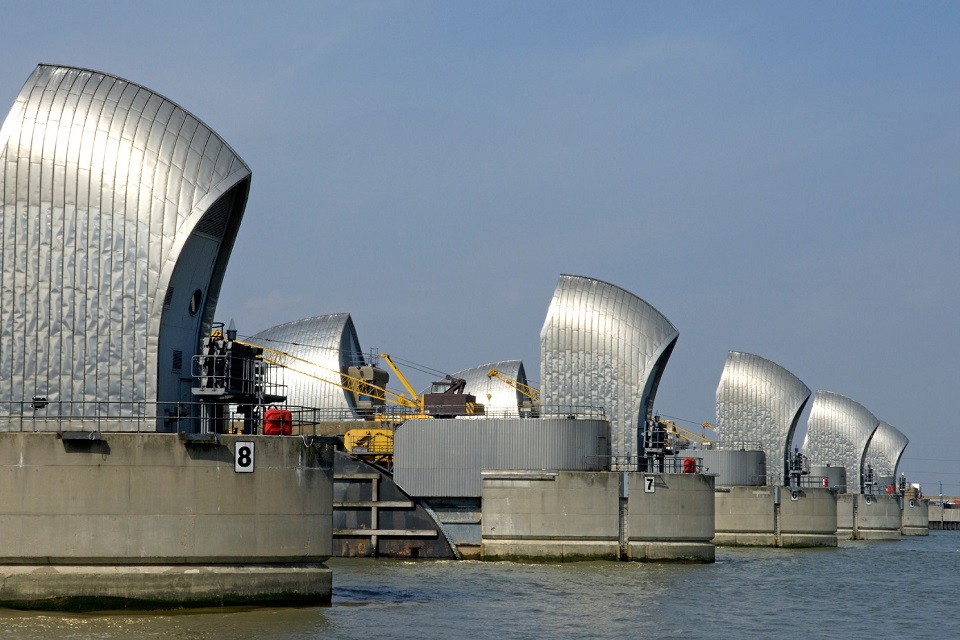
The Thames Barrier. © Environment Agency
Collaborating
By working with multiple partners we are creating great places for people and nature.
Our detailed design modelling shows that all properties in Oxford currently at risk of flooding from the River Thames will see their flood risk reduced when the scheme is in place. As well as reduced damage and disruption to homes and businesses, this means thousands of residents in Oxford will enjoy improved peace of mind from the worry of flooding.
Working with multiple partners, it is also creating a new stream, new woodland and a wetland wildlife corridor with species-rich grazed marshlands.
More space has been created for floodwater away from built-up areas, reducing flood risk for homes and businesses in Oxford and the surrounding areas for many decades to come.
What we love about the Oxford Flood Scheme:
- properties are at reduced risk of flooding
- new woodland creation
- utilities are less likely to be impacted
- tourists can access and enjoy Oxford
- improved footpaths with benches and information boards
- shops, schools, doctors and hospitals remain accessible
- creation of species-rich grazing marshland
- reduced flood risk for businesses
- a wetland habitat corridor for wildlife
- reduced risk of sewer flooding
- wellbeing of people in Oxford
- commuters are able to travel
- new fish habitat
- rail lines remain open
Investing for change
Innovating to unlock new sources of funding.
Unleashing innovation and developing new sources of finance, working with partner organisations, are fundamental for developing nature-based solutions and delivering nature recovery so that we can adapt to and tackle climate change.
The Environment Agency has been actively involved in supporting innovative finance opportunities for environmental projects, such as through NatureBid.
Part of the Environment Land Management Test and Trial programme, NatureBid brings together those who want to fund environmental restoration and enhancement with those who can deliver it on the ground through the financial mechanism of a (reverse) auction.
The five auction trials enabled 2,300 hectares of soil improvement, 10.3 kilometres of hedgerows, fencing and buffer strips, and 10 hectares woodland creation.
The trials proved that auctions can deliver funding for a range of land management interventions that address water quality, flood risk, carbon sequestration and soil health.
The Environment Agency worked with Sylva Foundation to establish NatureBid. Partners include Forestry Commission, Farming & Wildlife Advisory Group South West, West Country Rivers Trust, Dartmoor National Park and Tweed Forum.
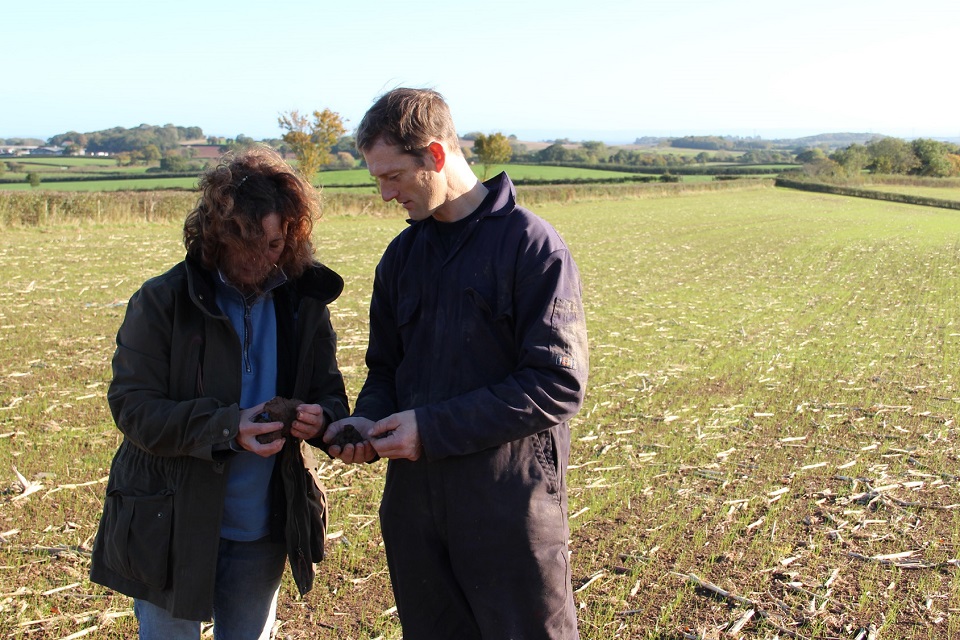
Soil sampling as part of improving maize management and natural flood management. © Farming & Wildlife Advisory Group South West
Working with nature
Tackling the biodiversity and climate emergencies together.
Established in 2003, the Moors for the Future Project is protecting damaged blanket bog habitats across the Peak District and South Pennines. This project has achieved the following.
Delivered evidence-based, landscape-scale conservation and communications that promote positive action for the uplands.
Raised over £45 million of public and private funding to restore over 34 square kilometres of bare and eroding peat and 3 square kilometres of native woodlands.
Improved water quality in catchments for three water companies with 19.5 million customers. Improving health and well being of millions.
Reduced the risk of flooding to downstream communities and the risk and impact of wildfires.
Restored habitat prized and protected for biodiversity, home to protected birds, mammals and rare plants. Protecting a fragile upland environment at the frontier of climate change.

Moors for the Future blanket bog protection scheme. © Moors for the Future
Designing low carbon futures
Leading the way on driving down carbon whilst we strengthen resilience.
The Boston Barrier is a £100 million priority scheme delivering tidal flood risk improvement to properties in Boston, Lincolnshire.
It’s the second largest defence in the country, featuring a 300 tonne steel gate that is raised into place to protect 14,000 homes and businesses from tidal flooding.
Low carbon concrete was used throughout – 14,000 tonnes, or 90% of the weight of the entire structure. Other carbon savings were made throughout the build.
Limiting carbon emissions is the most effective way to combat climate change
Emma Howard Boyd

Boston Barrier. © Environment Agency
Strengthening community resilience
Engaging differently so that no one is left behind.
Recent global events have shown we need a step change in our preparedness and resilience. We face more frequent, bigger and more complex incidents that we have not experienced before.
We all need to work together to prepare – citizens, community groups, emergency responders, businesses and government.
We are exploring different approaches to engagement so we can help communities to understand their risks and be better prepared.
For example, in the North East we have worked with schools and community groups, using different technologies and ways of engaging to reach wider audiences than ever before. This includes asylum seekers and refugees.
In Yorkshire, a community pathfinder project has trialled new approaches and content through social media, advertising and a stronger online presence, reaching more than 1.5 million people.
Unless people know what to do to prepare for and when a big incident happens then lives and livelihoods will still be lost.

Tree planting as part of the Ponteland flood alleviation scheme. © Environment Agency
Helping businesses prepare
Advising and regulating in a changing climate.
By encouraging regulated businesses to think differently about scare resources we are helping to integrate climate adaptation and mitigation thinking into their manufacturing processes.
Improving resource efficiency helps businesses save money, and reduces their consumption of energy, materials and water and makes them more resilient.
Kimberly-Clark’s site in Barrow, Cumbria produces 120,000 tonnes of tissue paper per year and the company manufactures Andrex and Kleenex.
Working with them during their recent investment in a new tissue machine and converting line has reduced water and energy use by 50 to 70%, and they are now able to re-use more fibres within the paper-making process.
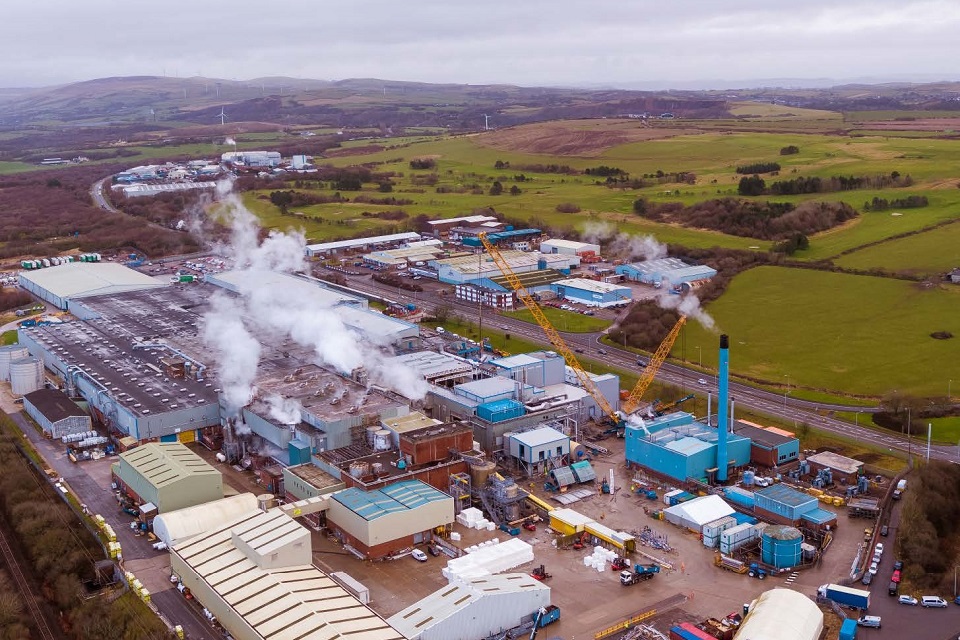
Kimberley-Clark’s tissue paper production site at Barrow. © Kimberley-Clark
Stepping up to level up
We also need a step change in approach nationally.
The Intergovernmental Panel on Climate Change have warned of the urgency of preparing for climate impacts and the Climate Change Committee of the need for a step change in approach. This brochure illustrates how we are already working differently with partners in places around the country to prepare for todays and tomorrows climate.
We are also taking action nationally and have an opportunity to catalyse a national step change as work begins on the next National Adaptation Programme and on the National Resilience Strategy.
One example is the National Framework for water resources – a set of long term environmental plans to avoid a crunch point in 20 to 25 years where, if nothing is done, demand for water will be greater than the water available.
Those responsible for England’s water supplies are working together to understand our future water needs. Water company boundaries have been put aside to consider the needs of each region and nationally, including how to provide the resilience and environmental protection needed.
The associated Regulators Alliance for Progressing Infrastructure Development (RAPID) has identified 19 strategic, water supply infrastructure schemes to help ensure timely delivery of new supply options.
This enables us to ask what do we want this environment to look like in 2050, given the changing climate.
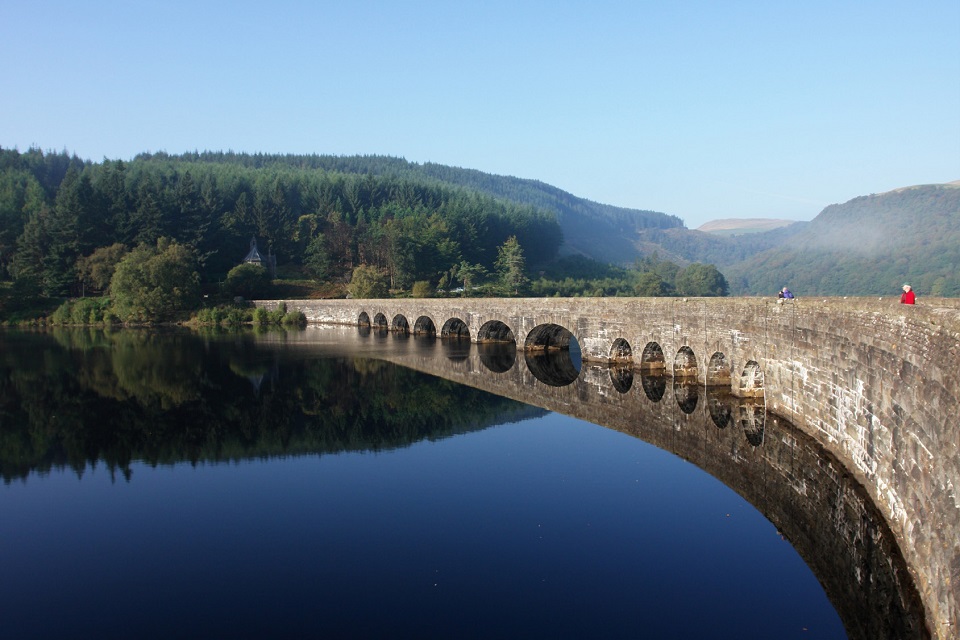
View of the dam wall spanning the Elan reservoir, Rhayader, Powys. © Environment Agency
We’re on the journey
Together we can, and are tackling the climate emergency.
We’re showing what’s possible by thinking and working differently in how we enable people and places to be better protected from climate impacts.
Through this publication, we are showing that it is possible for us to live differently in a changing climate and if we act now it will be better for people, nature and the economy. Particularly if action on resilience goes hand in hand with the journey to net zero. We want to inspire others to share our ambition and to take action.
The Environment Agency will play its part in mobilising action locally and inspiring a national step change.
We all need to learn to live differently in a changing climate: as nations, as governments, as businesses and as individuals. At the Environment Agency, we are doing all we can to help make those changes, using the invaluable research and recommendations in our latest Adaptation Report. We’ve made a great start, but we need all your help to make these endeavours a success. We hope you’ll join us on this journey to create a net zero nation resilient to climate change.
Sir James Bevan
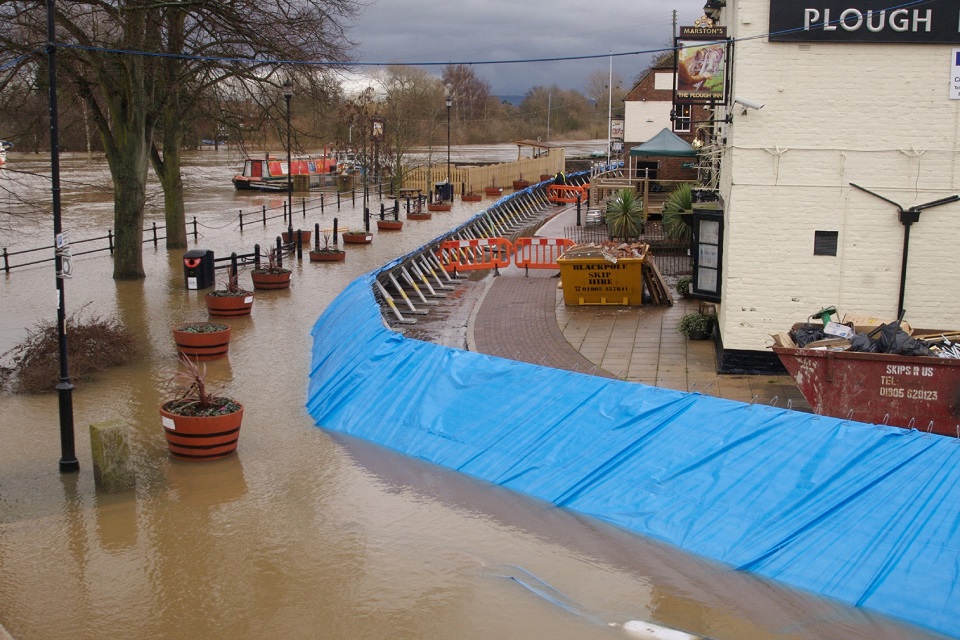
Temporary flood defences in Upton-on-Severn. © Environment Agency
Contact
Environment Agency homepage on GOV.UK
General enquiries: 03708 506 506
Incident hotline: 0800 80 70 60
Floodline: 0345 988 1188
On social media: @EnvAgency
or search for Environment Agency on Facebook

